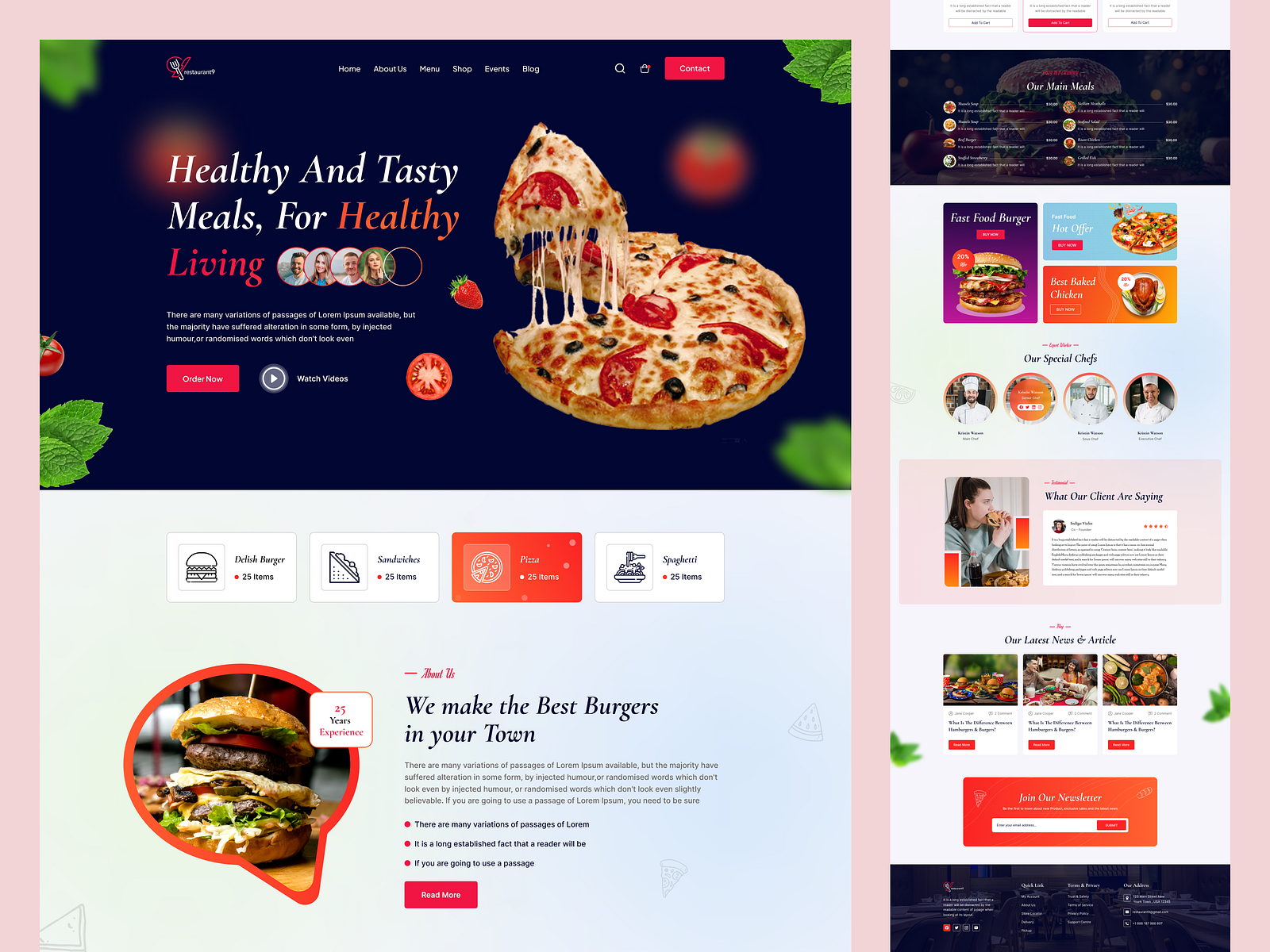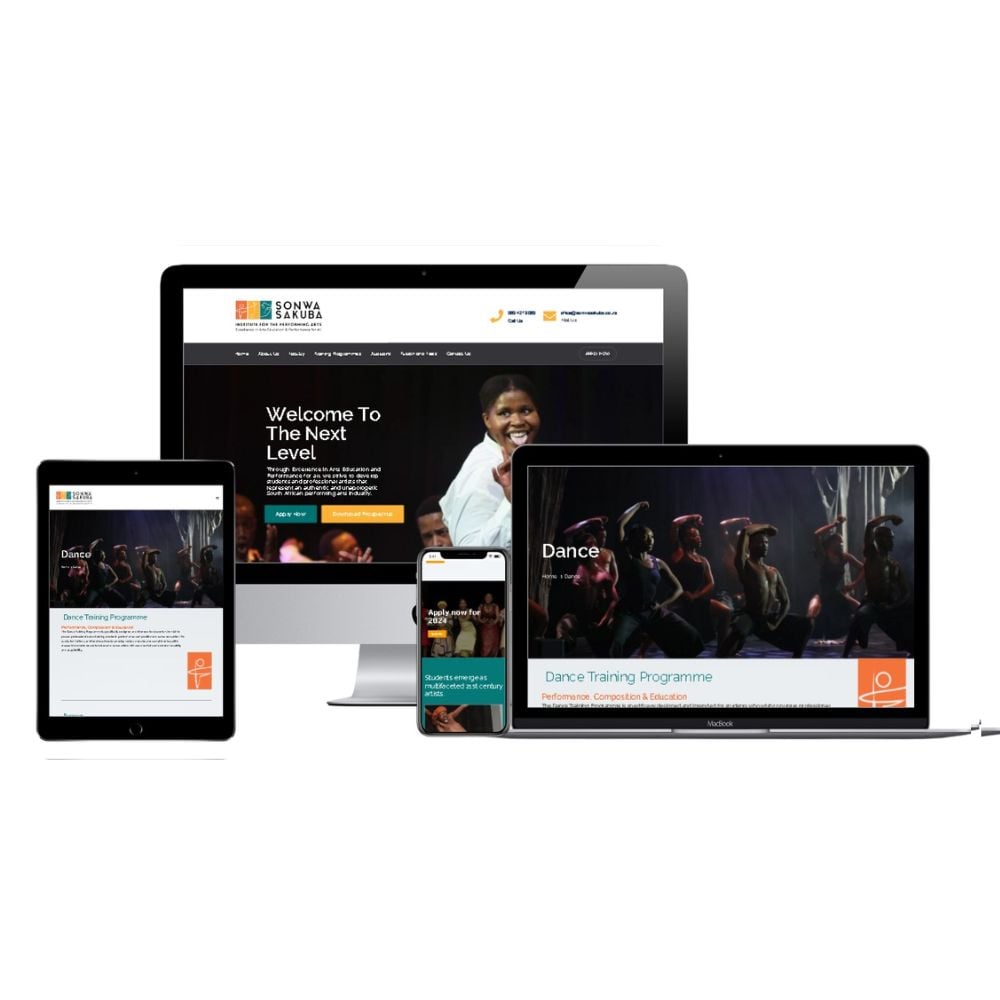The Ultimate Overview to Modern Website Design Trends
In the ever-evolving digital landscape, contemporary web site layout patterns play an important role fit customer experience and engagement. From the surge of minimal design concepts that focus on simplicity to the impact of bold typography in defining brand identification, each element adds to a cohesive online visibility. The emphasis on responsive and mobile-first methods, alongside ingenious microinteractions, further boosts usability. In addition, the expanding concentrate on sustainable website design methods reflects a commitment to environmental responsibility. These trends jointly elevate important inquiries concerning the future of effective internet layout and what it means for services and consumers alike.
Minimalist Layout Principles
Minimal style concepts highlight the idea that much less is a lot more, supporting for simplicity and performance in visual communication. This technique strips away unnecessary components, focusing instead on crucial elements that convey the desired message effectively. By focusing on clarity, minimal layout enhances individual experience, enabling site visitors to browse sites effortlessly.
Core tenets of minimalist layout consist of the usage of ample white room, which develops a sense of equilibrium and company. This unfavorable area not only directs the customer's focus to crucial elements yet likewise promotes a soothing aesthetic ambience. In addition, a minimal shade scheme is usually used, utilizing soft shades or monochromatic systems to keep visual communication and protect against overwhelming the user.
Typography plays a vital function in minimalist style, where readable fonts are chosen for their simplicity and effectiveness in connecting web content. Inevitably, minimalist style principles grow a concentrated setting that encourages users to involve with the material, enhancing the general performance of modern website layout.
Vibrant Typography Selections
Accepting bold typography choices has actually ended up being a specifying quality of modern-day site style, as it properly captures attention and shares solid messaging. Designers are increasingly making use of typography not merely as a useful aspect however as a key visual component that boosts the general aesthetic and user experience.

Moreover, the association of bold typography with minimalist layout concepts enables striking contrasts, improving readability while keeping aesthetic appeal. The usage of whitespace around strong message even more highlights its value, making sure that the message resonates with the target market.
As electronic landscapes end up being more competitive, leveraging vibrant typography enables brands to differentiate themselves and leave a long lasting impact. The cautious selection of typefaces and their application can evoke feelings, develop tone, and drive activity, making vibrant typography an indispensable tool in modern-day site layout. Eventually, it is an effective means to boost narration and ensure that key messages are not just seen yet also really felt.
Responsive and Mobile-first Style
Mobile-first and receptive layout has actually emerged as a crucial concept in modern web site growth, reflecting the increasing reliance on smart phones for accessing online web content. As user behavior shifts towards mobile surfing, designers must focus on creating experiences that adjust perfectly across numerous display dimensions and resolutions.
A responsive layout guarantees that an internet site automatically readjusts its format, images, and performance based on the tool being utilized. Mobile-first style advocates for establishing web sites at first for smaller displays, consequently scaling up to larger display screens.
Executing receptive and mobile-first principles not only deals with user preferences but additionally lines up with search engine optimization (SEARCH ENGINE OPTIMIZATION) methods. Significant internet search engine, like Google, focus on mobile-friendly sites in their positions, making it imperative for businesses to take on these style strategies. In an affordable electronic landscape, accepting mobile-first and responsive design is not simply an alternative; it is vital for guaranteeing ease of access and interaction with a varied audience.
Involving Microinteractions
Microinteractions play a critical role in boosting user engagement and general web site experience, specifically in the context of receptive try this website and mobile-first design. These subtle design aspects give prompt comments to individuals, making interactions extra pleasurable and user-friendly. Examples include button animations, alert signals, and packing indicators, which not only guide customers yet additionally create a sense of connection with the user interface.
Including engaging microinteractions can significantly enhance usability by decreasing cognitive tons. When customers obtain auditory or visual responses upon performing actions, such as clicking a button or submitting a kind, they feel much more confident in their selections. This cultivates a smoother navigating experience, inevitably increasing customer retention.

As web site style trends remain to progress, the significance of microinteractions can not be overemphasized. They act as the subtle yet effective touchpoints that transform average communications right into remarkable experiences, therefore boosting the total effectiveness of contemporary web style.
Sustainable Web Design Practices
Lasting internet layout methods are coming to be significantly important as the electronic landscape grows and environmental issues rise. Developers and developers are identifying their responsibility to create internet sites that not just offer user demands however also minimize environmental influence. This strategy includes a number of key strategies.
To start with, maximizing energy intake is extremely important. Web sites should be developed to load rapidly and effectively, which reduces web server energy usage and improves customer experience. Techniques such as image compression, reducing HTTP requests, and using modern coding practices contribute substantially to this goal.
Second of all, choosing green organizing providers is critical - website design. Many organizing firms are now powered by renewable resource resources, enabling internet sites to operate in a much more lasting way. This selection shows a dedication to minimizing carbon footprints
Furthermore, embracing a minimalist layout can improve sustainability. Less components on a page bring about much less data transfer, which not just speeds up filling times but additionally saves sources.
Lastly, advertising digital accessibility ensures that sites get to a larger target market without unneeded bloat, straightening user experience with environmental duty. By integrating these lasting methods, web developers can visit this page add positively to both customer involvement and the world's well-being.
Conclusion
In recap, modern internet site design patterns emphasize the integration of minimalist principles, bold typography, and responsive style to enhance individual experience. Engaging microinteractions add to memorable interactions, while sustainable practices promote for ecologically conscious development. Jointly, these components not just elevate aesthetic allure but also enhance performance, making certain that web sites are both aesthetically striking and straightforward. Embracing these patterns is important for creating impactful digital experiences that reverberate with users in an increasingly affordable online landscape.
In the ever-evolving electronic landscape, modern-day site style fads play a vital function in forming customer experience and interaction. By prioritizing quality, minimal design boosts user experience, allowing site visitors to browse internet sites effortlessly.
Eventually, minimalist design principles grow a focused setting that encourages customers to engage with the web content, enhancing the overall efficiency of modern-day website layout.Microinteractions play a critical role in improving user interaction and total website experience, specifically in the context of mobile-first and responsive design.In summary, modern internet site style patterns stress the assimilation of minimalist principles, strong typography, and receptive design to enhance individual experience.